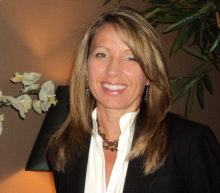Spray-On DNA "Barcode" Tracks Harmful Chemicals
(Inside Science TV) – Everything from food, to air to water runs the risk of becoming contaminated.
Now chemists at the Lawrence Livermore National Laboratory in California have developed a technology that can detect and track dangerous particles in food and in the air.
“The DNA in the material can be used to identify those particles," said George Farquar, a chemist at Lawrence Livermore National Laboratory.
With the technology, called DNA Trax, researchers create tiny sugar-based particles and label them with a unique DNA signature. The particles can be sprayed onto food or released into the air to track the source of contaminants.
“It’s a safe product for people to inhale in small quantities and to ingest, so we’re able to release it in public settings," said Farquar.
The particles act as a sort of barcode, and the technology can track exactly where a particular food came from if an outbreak occurred.
“You could then quickly identify back to the original source of the food down to the date, the farm, the crew, the pick," Farquar said.
Scientists say it could trace contaminated food back to its source in less than an hour. The current methods take about 10 days.
“The real key is the small piece of DNA, about 100 bases long that is unique," said Farquar.
The technology could also be used to detect dangerous chemicals in public places like subways and train stations, or to understand air quality in homes and offices. It was tested in the hallways of the Pentagon to help improve their biological detection systems.
“These are all things that are practically impossible to do otherwise, and with DNA Trax, it’s actually very easy," remarked Farquar.

